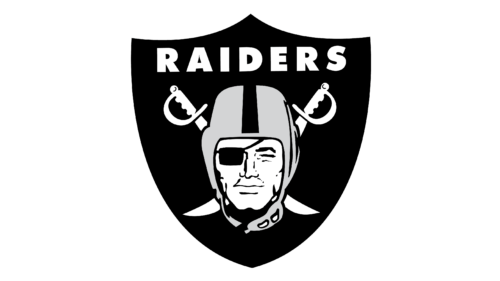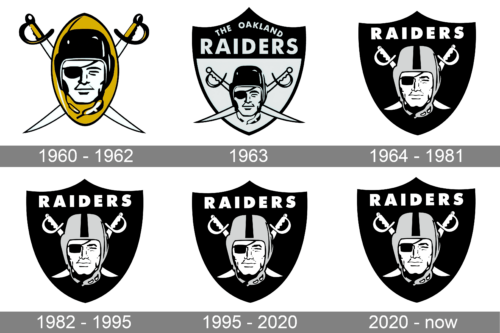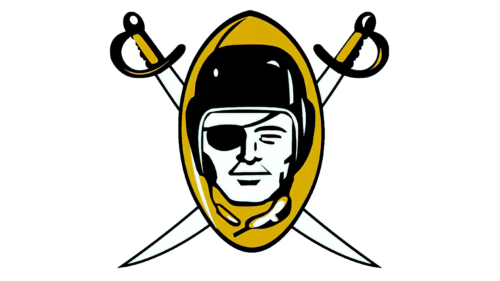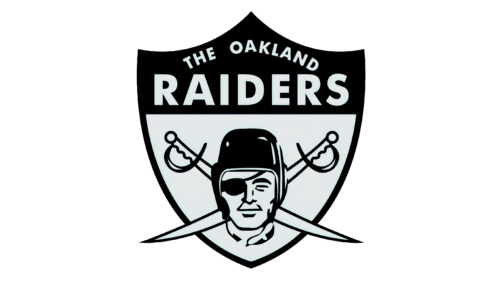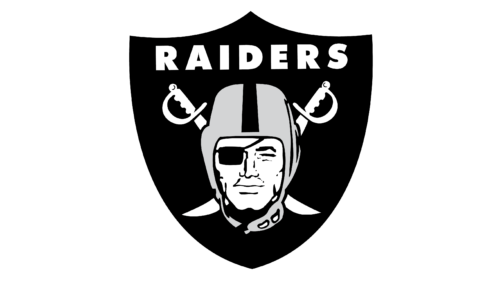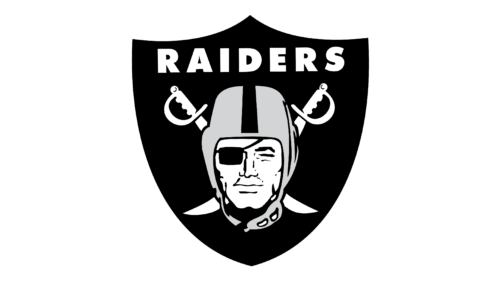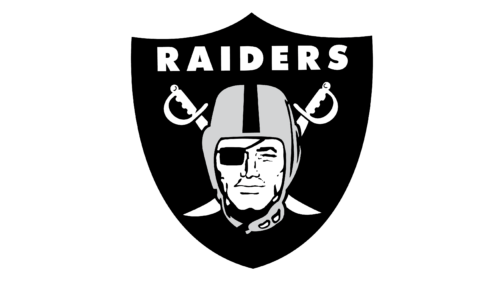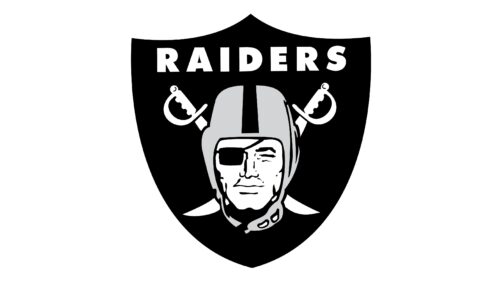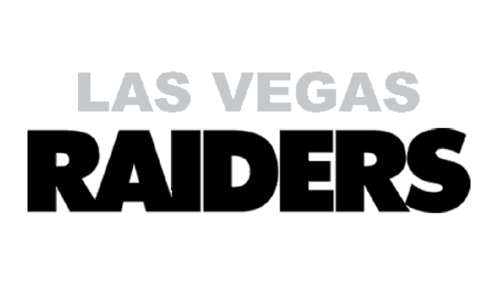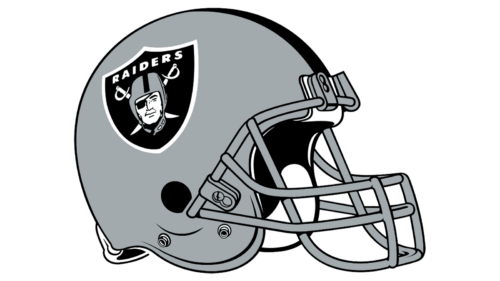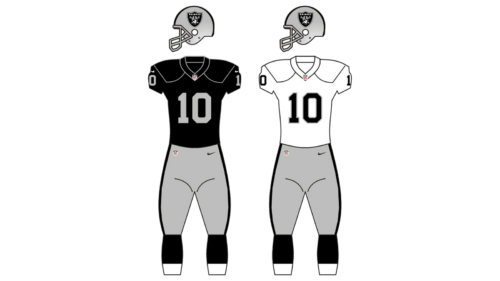Las Vegas Raiders are members of the West Division of the American Football Conference, competing in NFL. The club was established in Oakland, and for a decade played in Los Angeles, coming back to its motherland in 1995, and relocating to Las Vegas in 2020.
Brand Overview
Las Vegas Raiders is one of the NFL clubs that had to jump a lot. We are saying about the relocations of the team. It was founded in Oakland, where it stayed until the beginning of the 1980s, then Raiders moved to Los Angeles, staying there for a decade, and in the middle of the 1990s came back to Oakland, moving to Las Vegas in 2020.
Practically since the club’s founding, from 1963 until recently, the Raiders’ history has been inextricably linked to the figure of Al Davis, who first coached the team and made it a strong contender for other NFL clubs, then was a minority owner from 1966-1971 (when he was also an AFL commissioner), and from 1972 until he died in 2011 was the owner and general manager of the team. Davis remains the only person to have tried on the roles of assistant, head coach, general manager, league commissioner, and club owner.
Another iconic man for the Raiders was head coach John Madden, under whom the club won its first championship. Under Madden, the Raiders won the division more times (7) than in the 45 years after him (6). Despite this, he was surpassed by Tom Flores in Super Bowl victories. Since handing over ownership of the club to Mark Davis, son of Al Davis, the club has performed without any outstanding results. In 2018, the team finally “shot up” after the appointment of charismatic head coach Jon Gruden, who had already led the team from 1998-2001. Gruden’s first period with the Raiders ended with his trade to Tampa and winning the championship against his former team. The second era ended even more ignominiously – Gruden was fired after his e-mail correspondence with a lot of racist and homophobic language was published.
Meaning and history
Las Vegas Raiders, a professional football club, which is based in Las Vegas since 2020, was established in Oakland, California in 1960, and initially was named “Oakland Señors”, as a tribute to the original Hispanic population of the city. But after the local media mocked the name for several days, it was changed to the current, Raiders.
The Raiders are one of the teams that have had a decent run around the country. In its early days, the club played in San Francisco, but by 1962 the team had settled in Oakland. At the famous Oakland Coliseum, the Raiders played until 1981, then moved to Los Angeles. In 1994 the team returned to Oakland, and since 2020 the club is based in Las Vegas.
The Las Vegas Raiders are the underdog in the NFL in terms of fan attendance. The club’s games draw an average of 55 thousand people with an 87% attendance rate, while the attendance of other teams in the league exceeds 69 thousand visitors.
What are Las Vegas Raiders?
Las Vegas Raiders is the name of a professional football club, which was established in Oakland, California, in 1960. As Oakland Raiders the club has won three Super Bowls — in 1976, 1980, and 1983. Today Raiders play on Allegiant Stadium, are managed by Fave Ziegler, and have Josh McDaniels as the head coach.
In terms of visual identity, however, the Raiders are not even close to the league’s outsiders. Their iconic badge is known all over the world, and could often be seen on various garments, such as biker jackets or hats, as it is very similar to their aesthetics. In fact, not much has been changed in the original badge, introduced in 1960, until today, and it only means, that the club got lucky finding the perfect image from the very beginning.
1960 – 1962
The very first Raiders badge was introduced in 1960 and stayed with the club for two years. It was a black-and-white portrait of a pirate in a leather football helmet, drawn on a vertically-oriented football in gold, with two crossed sabers behind it. The black-and-white sabers had their handles in gold too, so the image was very well-balanced.
1963
The redesign of 1963 has replaced a golden football with a classy horizontally-stretched crest in gray and black, with the sabers moving behind the head of a pirate. The contours of all elements were refined and strengthened, and the solid black part of the crest got a heavy gray inscription on it, with the straight enlarged “Raiders” covered by an arched “The Oakland” in small capitals.
1964 – 1981
In 1964 the Raiders badge got strengthened and refined. The crest was now solid black, with the heavy white “Raiders” lettering set right above the pirate’s head. The sabers got shortened and didn’t cross the contours of the badge anymore. As for the main hero of the concept, he got his helmet redrawn in gray, with a thick black stripe, coming through its center.
1982 – 1995
In 1982 the club moved to Los Angeles, and since the previous version of the badge there was no geographical connotation in the lettering, there was no need to redesign it, hence the strong and brutal logo stayed with the club for the whole period in LA.
1995 – 2020
Moving back to Oakland did not make the Raiders change their badge either. And the iconic pirate badge in gray and black stayed untouched for the next twenty-five years, the last years of Raiders in Oakland.
2020 – Today
After the team moved to Las Vegas in 2020, their badge was slightly refined. The shade of the helmet was darkened up and a solid black crest gained a thick white frame. No other changes were made to the logo, as it was already perfect and very popular.
Font and colors
The heavy and stable lettering from the primary Las Vegas Raiders logo is set in the uppercase of a modern geometric sans-serif typeface. The closest fonts to the one, used in this insignia, are, probably, Futura W1G Extra Bold or Futura BT Pro Extra Black, with the massive shapes and clean contours of the characters.
As for the color palette of the Las Vegas Raiders’ visual identity, it is based on three shades: black, gray, and white, which make up a very masculine and strict image, looking powerful and distinctive on any background. This palette has been with the team since the beginning of the 1960s, and it’s hard to imagine the iconic pirate in any other shades.
Helmet
The helmets of the Las Vegas Raiders club look very stylish and sleek due to the choice of an interesting color palette, which makes the players stand out on the field. The main color of the helmet is silver, with the mask in the same shade, and the belts in white. The iconic black-gray-white crest with a pirate is placed on the sides of the helmet, creating a bright contrast with the metallic background.
Uniform
The official colors of the Las Vegas Raiders are silver, black, and white. The team has two options for the uniform: the first features a black jersey with the silver number and a thin silver strand on its top part, and silver pants with minimalistic black stripes; the second option is composed of a white jersey with the black player’s number in a silver outline, and the same gray pants with black stripes. The simplicity of the uniform is compensated by the metallic gloss of the helmets.
Home Ground
Since the relocation to Las Vegas in 2020 the Raiders play at Allegiant Stadium, which was opened at the end of July of the same year. The arena has a capacity of 65,000 seats, which can be expanded up to 71,835. Located in Paradise, Nevada, the stadium also hosts the Las Vegas Bowl.
Before moving to Nevada, the Raiders changed four stadiums in Oakland, and one, Los Angeles Memorial Coliseum, in LA. In Oakland, the club started on Kezar Stadium for their first season and Candlestick Park for the second. For three years they played on Frank Youell Field, and only in 1976 they moved to Oakland Coliseum, which became their home for all the remaining time in Oakland.


